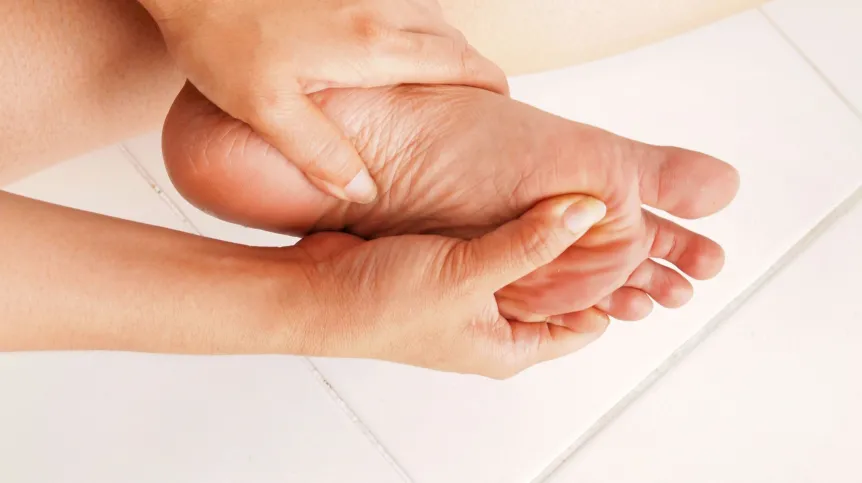
Polish scientists are among the first in the world to have shown that stem cells can be successfully used in the treatment of diabetic foot ulcer. In their opinion, this is an important step towards the development of cell therapies.
As part of the study published in the International Journal of Molecular Science, an inter-university team of Polish researchers analysed the safety and effectiveness of using allogeneic adipose-derived stem cells (ADSC) in the treatment of ulceration associated with diabetic foot.
The few reports in world literature on this subject come from in vitro or animal studies. The authors of the publication decided to test ADSCs on people.
Diabetic foot ulcer (DFU) is one of the most serious complications of diabetes. It results from the nervous or circulatory system disorders caused by unregulated and poorly controlled diabetes. The disease is manifested by ulceration, destruction of deep tissues, bones and joints, combined with sensory disorders in the feet and ischaemia. Untreated and neglected diabetic foot ulcer leads to serious bone deformations and even tissue necrosis, with amputation being the only option to save the patient's life.
Researchers led by Professor Beata Mrozikiewicz-Rakowska, a diabetologist from the Centre of Postgraduate Medical Education in Warsaw, identified a group of patients in whom the standard methods of treating hard-to-heal wounds had failed. They then divided them into two subgroups: one administered a fibrin gel containing adipose-derived stem cells, the other a gel without these cells.
Adipose tissue is a relatively large 'storage' of stem cells, which are increasingly being used in regenerative stem cell therapies. This most often consists in autologous cell transplantation, taking place within one organism. This study, however, used an allogeneic transplant - from another, related or unrelated donor.
At 7, 14, 21 and 49 days after application of the gel dressing, the researchers assessed the treatment progress. They took into account the wound healing rate and the safety of the used therapy. They defined the healing rate as the time needed to reduce the wound area by 50 percent compared to the initial size.
They also conducted molecular assessment of the therapeutic efficiency by analysing the expression of selected proangiogenic (promoting the formation of new blood vessels) and immunomodulatory factors and detecting donor DNA traces in the wounds of both study groups.
The traces turned out to be present. “Therefore, we have shown that ADSCs are capable of migrating from the fibrin gel into the wound bed,” the authors of the study say.
In terms of treatment effectiveness, wound size decreased more in the ADSC group than in the control group, and wounds healed much faster. Complete recovery was achieved in seven patients treated with ADSC compared to one treated without ADSC. The scientists also detected proteins clearly correlated with healing processes in the feet of people treated with the experimental gel. In the feet of people who did not receive stem cells, these proteins were not present.
The authors say this is strong evidence that ADSC accelerates and improves diabetic foot wound healing, further supported by molecular analysis. In their opinion, this is the first step towards the development of new methods of cell-based therapy.
“Our team has a lot of experience working with adipose-derived cells: both in terms of wound healing and reducing the risk of recurrence of the diabetic foot ulcers. We believe that these new data validate our previous efforts and we look forward to further progress in this area,” say the researchers from Mrozikiewicz-Rakowska's team.
The add: “DFU poses a serious clinical threat, so there is a need for new therapeutic approaches, such as advanced wound healing technologies that harness the pro-regenerative and immunomodulatory potential of ADSCs. Thus, our observation is a step forward.” (PAP)
PAP - Science in Poland, Katarzyna Czechowicz
kap/ zan/
tr. RL













